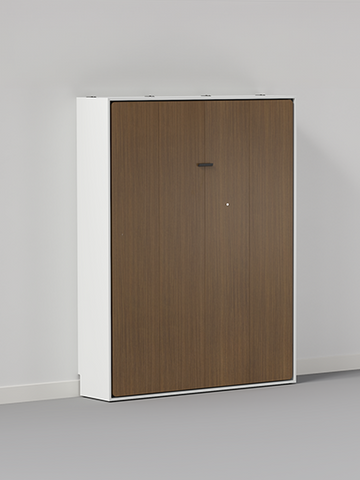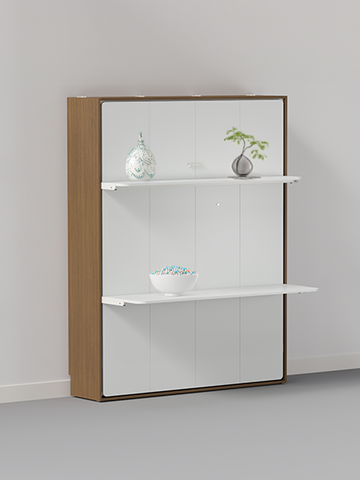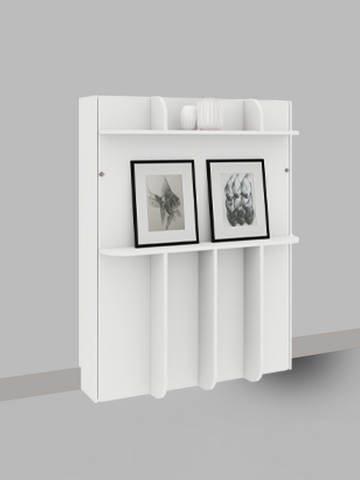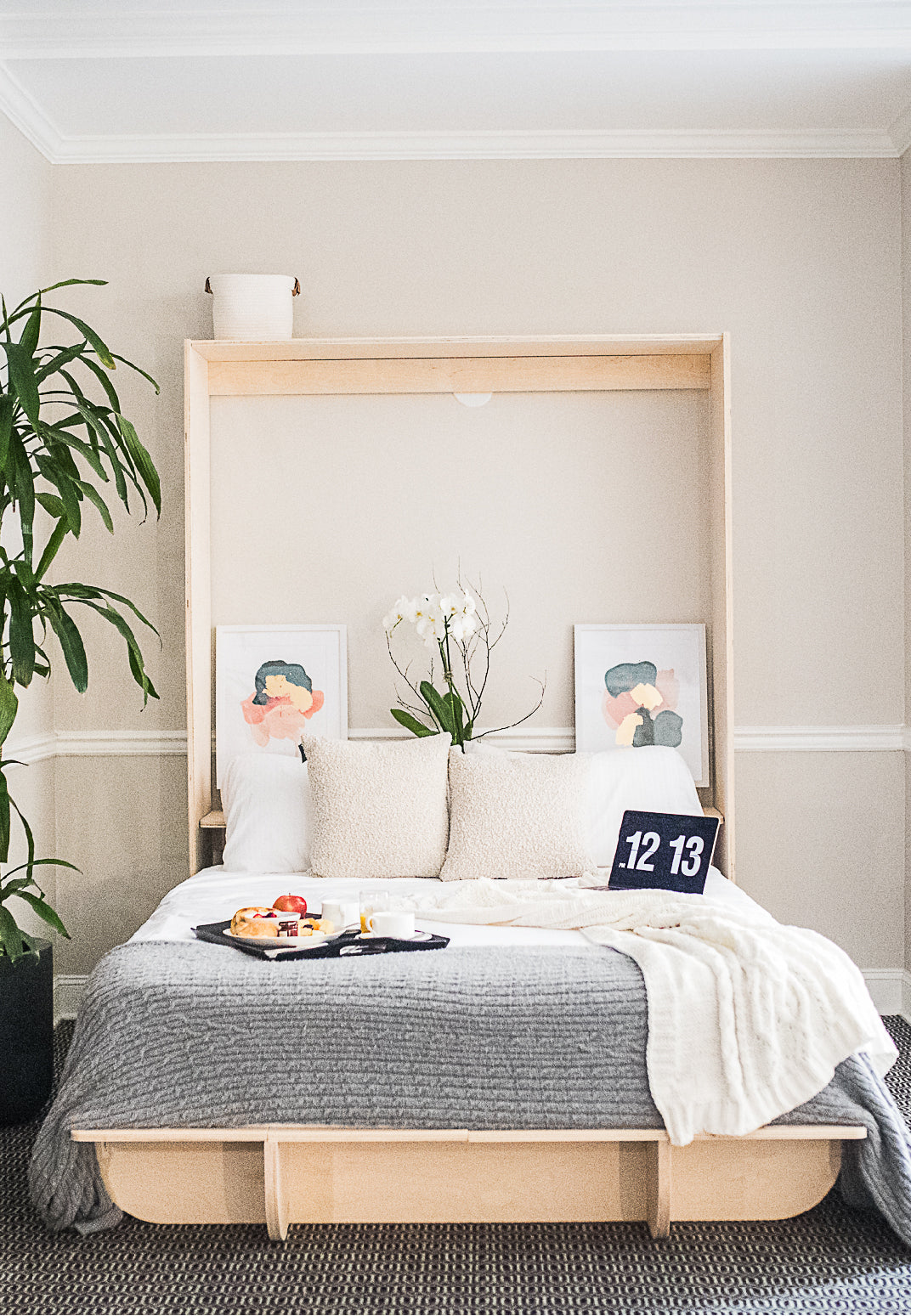Small space design can be a bit overwhelming. Limited square footage can often come off as more cramped than cozy — especially without a strategy. Luckily, bringing out the charm in a small house or apartment is not as tricky as meets the eye. The trick lies in tricking the eye.
The best interior designers rely on the elements of scale, light, and movement to maximize space. The principle of scale deals with the proportion of a room relative to its decorative fixtures.
Below, you’ll find a round-up of the clever design and décor on how to make a small room more spacious.
Key Takeaways:
- The size relationship between the fixtures and the room should work well to achieve the desired design effect, such as making the room appear bigger or smaller, according to Pepe Calderin Design.
- Lighting can influence your mood and the perceived size of a space, making it an essential element in any design scheme, according to Romanza Design.
- Movement refers to the flow of the room and how the eye travels through the space.
- The right design can transform small living spaces from claustrophobic to Zen-like.
Maximize your living space effortlessly—buy your Murphy bed today!
GET $200 OFF ON THE MURPHY BED
Multi-purpose Furniture

Incorporating furniture that can pull double duty is one of the smartest ways to maximize limited space. Pieces that can fold away or function as stylish storage — think a leather storage ottoman — are a great way to keep a small room organized and uncluttered.
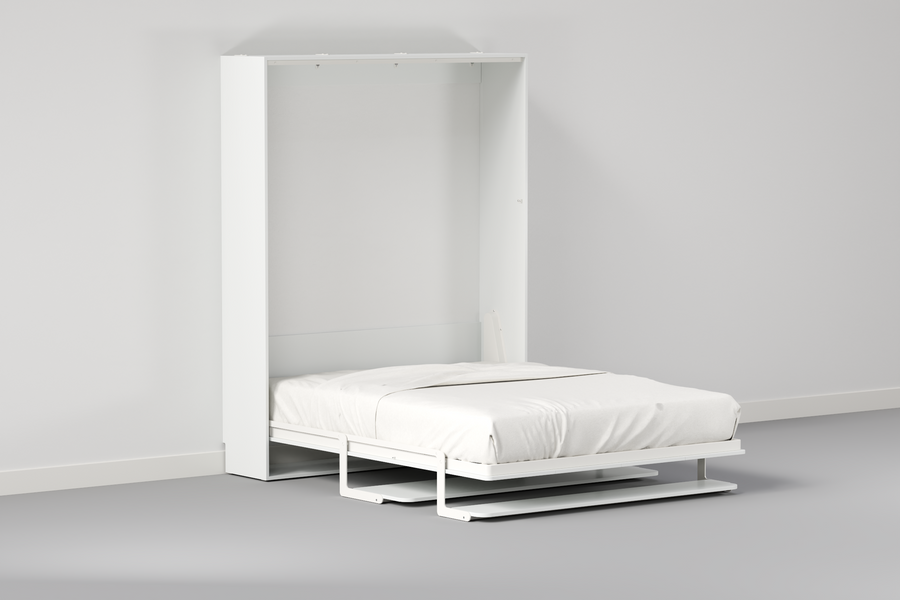
For decades, Murphy beds have been the answer for people seeking to maximize a small space. Modern Murphy bed models, such as the Lori Bed, are more stylish and functional than ever. For example, a small guest room can quickly become an office or bonus space by installing a wall bed.
Just lift the Lori bed, and you’ll have two well-defined spaces. Instead of using the force of springs or pistons, the Lori Bed can be lifted and lowered by hand using your and your lifting partner's strength. When folded up, the bed even has storage shelves on the outer face. Fold up desks, floating shelves, nesting tables, and wall-mounted shoe racks are other great multi-functional additions.
Upgrade your home with the ultimate space-saving solution. Buy your Murphy bed now!
Low Profile Pieces
If you can’t make your ceiling higher, consider making your furniture lower. Choosing furniture that sits lower to the floor gives small rooms a grander feel. This is because low profile pieces emphasize ceiling height. The higher the ceiling the loftier and airier the aesthetic.

Low profile furniture has the added value of keeping sight lines open, which makes any space feel larger. Mid-century modern pieces are often ideal candidates because they tend to sit low to the ground and feel visually lightweight. Along the same lines, select slimmer furniture, for example, dining tables with slender legs.
Proper Proportions
Furniture for small rooms is all about the right arrangement and proportions, according to the experts at Remodelista.

Leave a small gap between your furniture and the wall to create a sense of roominess. Avoid bulky pieces that feel heavy and take up too much usable space. For example, a sleek sofa or chair will give you as much sitting room as its overstuffed cousin but will take up much less of your room, suggests Remodelista.
That is not to say you have to sacrifice a bold statement-making piece. Instead of eating up too much floor space, select a large-scale piece of wall art or a mounted mirror to add dimension.
Aside from putting furniture that adds dimension, a Murphy bed is the best solution to maximize floor space. Modern Murphy beds come in different styles and finishes, ensuring you find one that complements your decor. Discover the perfect Murphy bed today and make the most of your tiny space!
Mirrors & Reflective Surfaces
No discussion about designing small spaces would be complete without the concept of using mirrors. Mirrors or, if you’re feeling extra bold, mirrored walls might be the oldest trick in the book when it comes to giving the illusion of having a larger space. That is because it is a fool proof trick.

Mirrors bounce light further into the room, which illuminates the entire space, making it feel bigger. Mounting a mirror near a window is very effective if your goal is to bring in more natural light.
You may use one or more mirrors, depending on your wall space and personal aesthetic. You can also incorporate this trick on a smaller scale by adding accent pieces with reflective finishes, such a glass-top side table, mirrored coffee table tray or light fixtures with a mirrored sheen.
Light Colored Paint
Choosing the right color palette is a simple way to make a small space appear larger. It is all about capturing the light. Dark colors tend to absorb light and make the room feel enclosed. On the other hand, softer tones make the room look open.

Similar to mirrors, white paint has reflective qualities that make the room feel spacious. Furthermore, painting the walls and ceiling the same shade of white will help draw the eye up, making the ceiling appear higher.
If you’re concerned that an all-white room is too sterile, add warmth and visual interest with wood finishes or textured accessories, such as colorful plush pillows or throws. But if you want to transform your room with a stylish Murphy bed, click now to buy and save more space!
Airy Fabrics
Floor-to-ceiling curtains can make a little space feel grand without an expensive price tag. Even if your place doesn’t have ceiling height window panels, installing a curtain rod as close to the ceiling as possible will create the desired effect.

Stick with sheer or solid-colored fabrics to avoid breaking up the line of sight. Keeping the view open will make the entire room feel less stuffy. If you're a fan of prints, choose a vertical curtain pattern over horizontal to further elongate the sightline.
Final Thoughts
With these space-saving furnishings and interior design solutions you’ll have the ability to transform even the smallest room into a cozy respite. From space-saving Murphy beds to airy fabrics, these small-space design tricks prove that you don’t need a big space to live large.
Looking for more small-space design solutions? You can find more tips in our guides below.

